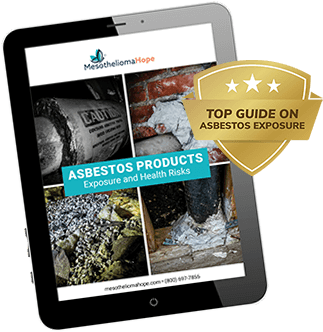Bricks and Asbestos Exposure
Asbestos was used in brick manufacturing and the bricklaying process because it added immense tensile strength to materials. Asbestos was lightweight as well. That reduced heavy burdens as gravity forces pulled at tall walls and fire flues.
Asbestos gave brick materials a fantastic ability to withstand high heat and be fireproof. It’s no wonder bricks were the prime choice for fireplace linings known as firebricks.
Asbestos was overwhelmingly used in almost all brick products from the turn of the twentieth century until the 1980s when the dangers of airborne asbestos exposure became widely known.
Besides adding strength and being fire resistant as well as reducing structural weight, asbestos raw materials were readily sourced, inexpensive, and stable.
Asbestos Fiber Exposure from Bricks and Mortar
Brick and mortar asbestos content varied according to their purpose and installation. Firebricks and their mortar contained up to 80 percent asbestos.
Fireboxes, flues, and chimneys were able to stand prolonged periods of direct flame contact because the asbestos additives didn’t burn or distort no matter how hot they got.
Ordinary clay and concrete bricks couldn’t handle this. Neither could regular Portland cement-based mortar mixes.
For nearly a century, hundreds of thousands suffered exposure in environments where airborne asbestos fibers floated in clouds about their workplace.
Every worker involved in the brick industry risked severe health problems when working with asbestos-containing materials (ACMs) like bricks.
These people were handling brick and mortar products with ACMs:
- Miners who extracted and processed asbestos for the brick industry.
- Workers manufacturing bricks in kilns and concrete plants.
- Journeymen bricklayers and block masons who cut, fit and mortared bricks on construction sites.
- Apprentices mixing mortar and adding raw asbestos into powders.
- Other tradespersons working around brick sawing and mortar mixing dust.
Fieldcraft persons had the highest asbestos exposure risk because they always disturbed asbestos particles while installing bricks. But other workers in the process experienced airborne asbestos from secondary sources.
Many brick factories had brick wall construction and hot water boilers wrapped in asbestos linings heated them. As well, asbestos wallboard, tiles, and roofing products abounded.
Asbestos dust also came home to cross-contaminate workers’ families. Bricklayers, their tools, and vehicles were covered by asbestos brick dust by day’s end. They returned home with asbestos particles on their clothes and in their hair.
Other construction workers also became exposed to asbestos in bricklaying projects. It was impossible to escape workplace asbestos dust from different materials which put bricklayers, themselves, at risk for cross-contamination.
Brick Products and Mesothelioma
Every worker exposed to brick products containing asbestos was at risk of developing the deadly lung disease called mesothelioma.
Asbestos fiber exposure is the single cause of mesothelioma and it’s not treatable in an advanced and aggressive form.
The lung lining is called the mesothelium and, over time, inhaling tiny asbestos fibers damages it.
Bricklayers and block masons who worked in dusty asbestos environments continually breathed in microscopic asbestos shards. These micro-abrasion particles impaled the mesothelium and remained permanently attached.
Asbestos fibers can’t break down or expel. Over time, they create scar tissue from irritating the mesothelium.
There is a lengthy latency period of anywhere from 10 to 50 years, but eventually, those exposed to asbestos could develop mesothelioma.
Compensation for Mesothelioma Victims
Exposure to asbestos dust from working with brick products caused many mesothelioma cases. Tragically, most mesothelioma victims were unaware of airborne asbestos fiber exposure dangers. Now they suffer incurable cancer.
The only recourse is claiming compensation from negligent producers and suppliers of ACMs.
If you suffer from mesothelioma as the result of workplace asbestos exposure, you deserve compensation.
You may claim for medical expenses, personal injury damages, and lost income. Families can also file claims on behalf of members ill with mesothelioma. They can also file wrongful death lawsuits.




